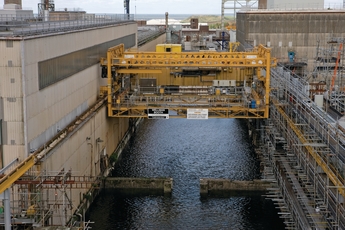The UK’s Nuclear Decommissioning Authority faces a ‘considerable challenge’ in taking forward the decommissioning of the UK’s largest and most hazardous nuclear site, Sellafield in Cumbria, according to a new report.

The report by the National Audit Office warns that some of the 240 buildings on the Sellafield site, which contain radioactive materials “are deteriorating or fall short of modern standards [and] pose significant risks to people and the environment.”
“Any significant containment failure, particularly in legacy storage ponds and silos, could result in highly hazardous radioactive material causing enduring contamination, affecting people and the environment,” it says.
The report acknowledges that performance of some of the major projects at Sellafield to date has been “poor,” But it does recognise that the most recent lifetime plan for clean-up of Sellafield site by 2120 (approved in May 2011), as an improvement, describing it as a replacement for “a previously unrealistic plan.”
The improved lifetime plan, however, contributed to an increase in the NDA's provision for decommissioning the site to GBP 67 billion ($107bn) (undiscounted) as at March 2012, up from £47 billion as at March 2009, the report said.
Despite this estimate, “considerable uncertainty” remains over the time required and cost of completing facilities to treat and store highly radioactive material held in deteriorating legacy ponds and silos, it added.
The report said that it “too early to judge” whether the Authority’s appointment of Nuclear Management Partners Limited as the parent body of Sellafield Limited is value for money.
“Sellafield Limited has saved £425 million, compared to previous expected costs, and it has reported further savings that the Authority is reviewing. However, the portfolio of 14 major projects at Sellafield has so far not provided good value for money, with significant lifetime cost increases and delays of between 2 and 19 months during 2011-12,” the report said.
Commenting on the report, Amyas Morse, head of the National Audit Office said: "Securing future value for money will depend on the Authority’s ability to act as an intelligent client, to benchmark proposed levels of performance and to provide better contractual incentives for making faster progress towards risk and hazard reduction."
The Department of Energy and Climate Change and the Nuclear Decommissioning Authority both welcomed the report.
A DECC spokesman said that the NAO report recognises "some of the progress" that has been made so far. He added that 2011 was the site’s best year for reprocessing operations in seven years, and that “real progress” is being seen in tackling a number of high hazard facilities.
The NDA stressed that it is important to consider current performance in its historic context.
“The NAO report highlights the importance of a new plan for the site, developed in 2011, which replaced older inherited plans that had unrealistic milestones and was undeliverable. Overall performance at the site is improving with over £425 million of costs savings made and a further £1 billion of previously planned capital expenditure avoided,” it said.
The full report and executive summary is available here




